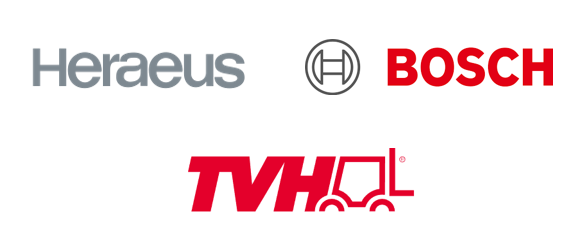Market Overview:
"The global train battery market was valued at US$ 615.6 Million in 2024 and is expected to register a CAGR of 5.8% over the forecast period and reach US$ 1,022.5 Million in 2033."
|
Report Attributes |
Details |
|
Base Year |
2024 |
|
Forecast Years |
2025-2033 |
|
Historical Years |
2021-2024 |
|
Train Battery Market Growth Rate (2025-2033) |
5.8% |
Train batteries play a pivotal role in supplying power for various train operations, from propulsion and lighting to auxiliary systems. These batteries ensure uninterrupted power supply, critical for safe and efficient train journeys. Train batteries are essential for energy storage during regenerative braking and maintaining power during power supply interruptions. With global shift towards sustainable transportation, train batteries contribute to reducing emissions and improving energy efficiency. Increasing adoption of electric trains further underscores significance of train batteries in modern rail systems, making these a key component in enhancing train performance and minimizing environmental impact.
The global train battery market is registering steady revenue growth driven by rapid expansion of electrified rail networks and increasing shift towards sustainable transportation. Innovations in battery technology by major companies, such as high-capacity lithium-ion batteries, enhance train efficiency and range is expected to further drive market revenue growth. Initiatives promoting electrification of rail systems and reducing greenhouse gas emissions drive revenue growth of the market. Stringent environmental regulations and government incentives accelerate adoption. As railways globally embrace electrification to meet climate goals, the train battery market is poised for substantial growth, revolutionizing rail transport by offering efficient, eco-friendly solutions.
Train Battery Market Trends and Drivers:
Electrification of Railways: Global shift towards sustainable transportation is driving adoption of train batteries, as electrified rail networks require reliable energy storage for efficient operation and reduced emissions.
Urbanization and Public Transit: Increasing urbanization and emphasis on public transit systems are driving the need for reliable and efficient train services, boosting demand for advanced train battery solutions.
Regulatory Initiatives: Stringent emission regulations and sustainability targets imposed by governments globally encourage railway operators to adopt cleaner and energy-efficient train technologies, driving demand for innovative train battery solutions.
Technological Advancements: Continuous developments in battery technology, such as higher energy densities and longer cycle life, enhance train battery performance, enabling longer travel distances and reduced downtime.
Operational Efficiency: Train batteries contribute to smoother train operations by providing power during peak demand, enabling regenerative braking, and ensuring reliable auxiliary systems
Train Battery Market Restraining Factors:
Initial Investment Costs: High upfront costs associated with implementing advanced train battery systems, including procurement, installation, and infrastructure upgrades, can deter some rail operators from adopting these technologies.
Limited Energy Density: Despite advancements, energy density of train batteries remains inferior to conventional fuel sources, impacting the distance a train can travel on a single charge and potentially requiring frequent recharging or swapping.
Charging Infrastructure Challenges: Developing a comprehensive charging infrastructure across extensive rail networks demands substantial investment and logistical planning, hindering seamless integration of train battery solutions.
Weight and Space Constraints: Weight and size constraints of train batteries can impact train design, payload capacity, and overall operational efficiency, particularly in retrofitting older train models.
Integration Complexity: Retrofitting existing rail systems with modern train batteries demands intricate integration and potential operational disruptions, deterring some operators from embracing these technologies
Train Battery Market Opportunities:
Electrification Initiatives: Expanding electrification initiatives across rail networks create opportunities for train battery providers, offering energy storage solutions that complement electrified trains, ensuring reliability and efficiency.
Hybrid Train Solutions: Developing hybrid train systems that combine conventional power sources with advanced batteries taps into growing demand for sustainable yet versatile rail solutions, opening new revenue streams for global players.
Battery Swapping Stations: Establishing battery swapping stations along rail routes enables efficient battery replacement, minimizing train downtime and catering to long-distance travel demands.
Smart Energy Management: Implementing smart energy management systems that optimize battery usage, charging cycles, and energy recovery not only enhance efficiency but also create value-added services.
Retrofitting Older Trains: Retrofitting existing diesel-powered trains with battery systems aligns with emission reduction goals, catering to operators looking to transition towards greener operations.
Regenerative Braking: Developing regenerative braking systems that capture and store energy during braking maneuvers creates opportunities for energy regeneration, reducing operating costs.
Battery Recycling and Second Life: Establishing battery recycling processes and exploring secondary uses for retired train batteries contribute to sustainability and offer additional revenue streams.
Train Battery Market Segmentation:
By Battery Type:
- Lithium-ion Batteries
- Nickel-metal Hydride (NiMH) Batteries
- Others
By Train Type:
- Electric Multiple Unit (EMU)
- Diesel Multiple Unit (DMU)
- Light Rail Transit (LRT)
- High-Speed Rail (HSR)
- Others
By Technology:
- Hybrid Battery Systems
- Advanced Energy Storage Systems
- Conventional Battery Systems
By Application:
- Propulsion
- Lighting
- Auxiliary Systems
By End-Use:
- Passenger Trains
- Freight Trains
Train Battery Market, By Region:
North America:
- United States
- Canada
Asia Pacific:
- China
- India
- Japan
- Australia & New Zealand
- Association of Southeast Asian Nations (ASEAN)
- Rest of Asia Pacific
Europe:
- Germany
- The U.K.
- France
- Spain
- Italy
- Russia
- Poland
- BENELUX (Belgium, the Netherlands, Luxembourg)
- NORDIC (Norway, Sweden, Finland, Denmark)
- Rest of Europe
Latin America:
- Brazil
- Mexico
- Argentina
- Rest of Latin America
The Middle East & Africa:
- Saudi Arabia
- United Arab Emirates
- South Africa
- Egypt
- Israel
- Rest of MEA (Middle East & Africa)
The US accounts for the largest market share in North America due to its well-developed rail infrastructure, advanced technological adoption, and commitment to sustainable transportation. The country's extensive rail networks, ongoing electrification initiatives, and investments in modernizing train systems create a conducive environment for adoption of train batteries, making the US a pivotal contributor in driving revenue growth of North America train battery market.
In Europe, key trends driving train battery sales include rapid shift towards decarbonization, which is driving adoption of electrified rail systems and battery solutions. Emphasis on energy efficiency, coupled with advancements in battery technology and integration of smart systems, further accelerate the shift towards use of train batteries. In addition, rise of cross-border high-speed rail networks necessitates reliable energy storage, adding to the rising demand for train battery solutions in Europe.
Investment in China and India holds paramount significance for revenue growth of Asia Pacific train battery market. These countries, with rapid urbanization, ambitious rail expansion plans, and increasing focus on clean energy solutions, offer substantial opportunities to global players. Increasing pace and number of rail projects in China and India amplifies the need for reliable energy storage, positioning these countries as key players in driving train battery market revenue growth in the region.
In Latin America, Brazil and Mexico emerge at the forefront of train battery manufacturers growth. Brazil's extensive rail network modernization projects and Mexico's growing rail industry, coupled with emphasis on sustainable transportation of both the countries, create favorable environment for train battery adoption. As these countries invest in rail infrastructure and energy-efficient solutions, these become focal points for train battery manufacturers making efforts to tap into untapped markets in Latin America.
The Middle East & Africa presents a promising outlook for train battery sales. The region's ambitions for enhanced rail connectivity, coupled with efforts towards sustainability, drive adoption of train batteries. As countries invest in electrified rail networks and modernize existing infrastructure, demand for efficient energy storage solutions gains traction. This positive trajectory positions Middle East & Africa as an emerging market for train battery sales, with growth prospects aligned with the region's evolving transportation needs.
Leading Companies in Train Battery Market & Competitive Landscape:
The global train battery market competitive landscape is characterized by presence of established battery manufacturers, rail technology providers, and innovative startups. Key players focus on developing high-capacity, energy-efficient batteries that cater to various train types and routes. Collaborations between battery and rail companies enhance integration and performance. Technological advancements, such as fast charging and predictive maintenance solutions, drive differentiation. Sustainability and regulatory compliance remain pivotal, prompting the development of eco-friendly battery solutions.
Company List:
- Siemens Mobility
- ABB Ltd.
- Saft Groupe S.A.
- EnerSys
- Toshiba Infrastructure Systems & Solutions Corporation
- Hitachi Rail
- Wabtec Corporation
- Kokam Co., Ltd.
- GS Yuasa Corporation
- Bombardier Transportation
- Hoppecke Batterien GmbH & Co. KG
- Johnson Matthey Battery Systems
- CRRC Corporation Limited
- Exide Industries Ltd.
- Victron Energy B.V.
Research Scope
|
Report Metric |
Report Details |
|
Train Battery Market size available for the years |
2021-2033 |
|
Base Year |
2024 |
|
Forecast Period |
2025-2033 |
|
Compound Annual Growth Rate (CAGR) |
5.8% |
|
Segment covered |
By Battery Type, Train Type, Technology, Application, End-Use, and Region |
|
Regions Covered |
North America: The U.S. & Canada Europe: Germany, The U.K., France, Spain, Italy, Russia, Poland, BENELUX, NORDIC, & Rest of Europe Asia Pacific: China, India, Japan, Australia & New Zealand, ASEAN, & Rest of Asia Pacific Latin America: Brazil, Mexico, Argentina, & Rest of Latin America The Middle East & Africa: Saudi Arabia, United Arab Emirates, South Africa, Egypt, Israel, and Rest of MEA |
|
Fastest Growing Country in Europe |
Germany |
|
Largest Market |
North America |
|
Key Players |
Siemens Mobility, ABB Ltd., Saft Groupe S.A., EnerSys, Toshiba Infrastructure Systems & Solutions Corporation, Hitachi Rail, Wabtec Corporation, Kokam Co., Ltd., GS Yuasa Corporation, Bombardier Transportation, Hoppecke Batterien GmbH & Co. KG, Johnson Matthey Battery Systems, CRRC Corporation Limited, Exide Industries Ltd., Victron Energy B.V., and among others. |
Frequently Asked Question
What are the key factors driving revenue growth of the global train battery market?
The global train battery market revenue growth is driven by factors such as shift towards sustainable transportation, electrification of rail networks, advancements in battery technology, growing urbanization, and regulatory mandates for emission reduction. These factors collectively drive adoption of energy-efficient and eco-friendly train battery solutions, driving market revenue growth.
Which regions/countries register significantly high demand in the global train battery market?
Regions and countries with well-developed rail networks and a strong commitment to sustainable transportation, such as North America, Europe, and parts of Asia Pacific, register high demand in the global train battery market. These areas embrace electrification initiatives, advanced energy storage systems, and hybrid train solutions, driving the need for reliable train battery technologies.
What are the key challenges faced by companies in the global train battery market?
Companies in the global train battery market face challenges such as initial investment costs, establishing robust charging infrastructure, weight and space constraints, and complexity of integrating train batteries with existing systems. These challenges require strategic planning, innovation, and collaboration to overcome hurdles and ensure successful adoption.
What are the emerging trends observed in the global train battery market?
Emerging trends in the global train battery market include widespread adoption of lithium-ion batteries, development of hybrid train systems combining conventional power sources with batteries, battery swapping stations, smart energy management systems, and retrofitting older trains with advanced battery solutions. These trends result in increasing focus of the global players on efficiency, sustainability, and technological advancements.
How are government initiatives supporting revenue growth of the global train battery market?
Government initiatives across various countries are playing a crucial role in driving revenue growth of the global train battery market. Governments are enacting emission reduction policies, providing incentives for electrification, investing in rail infrastructure, and promoting sustainable transportation modes. These initiatives encourage rail operators to adopt energy-efficient train battery solutions, thereby boosting market revenue growth and enhancing the industry player's eco-friendly direction.

